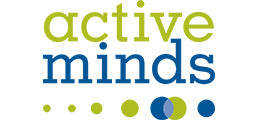Michael Phelps set another record recently as the first male swimmer to make five Olympics, but life has not always been easy for Phelps.
Below are three takeaways we can glean from Phelps’ journey to achieve personal success.
1. Leverage Obstacles into Opportunities
Despite early athletic promise, Phelps struggled with concentration in the classroom. Phelps was diagnosed with Attention Deficit Hyperactivity Disorder (ADHD) at the age of nine, as his parents’ divorce was finalizing.
His mother Debbie did not let being a single parent and Michael’s ADHD challenges faze her. When Michael’s teachers informed her that he could not concentrate on anything, Debbie, an educator herself, worked with Michael on various solutions in and out of the classroom to prove them wrong. Debbie instilled structure into his life, nurturing swimming into a focus he could own. Swimming provided Michael with self-discipline and the needed structure for him to come off of his ADHD medication without adverse consequences during his teen years.
Michael continued the resilient spirit that Debbie demonstrated and instilled in him. When Australian swimmer Ian Thorpe said in an interview that it was unlikely for Phelps to win eight gold medals in the Beijing Olympics, Michael taped the quote to his locker and used it as fuel to further motivate him. After Phelps won his eighth medal, Thorpe responded, “Never in my life have I been so happy to be proven wrong.”
2. Practice Relaxation When Faced with Unexpected Challenges and Intense Pressure
Phelps’ coaches claim they have never seen him nervous before races. U.S. Olympic Committee Sport Psychologist Sean McCann breaks mental strength into two components. The first is an offensive mental aptitude: an unyielding desire for victory, no matter the pressure. he second is a defensive resilience that allows athletes to roll with the punches through unpredictable situations like watering goggles or head-to-head collisions. Very few people possess both.
Swim coach Bob Bowman has prided Phelps on his ability to be incredibly relaxed before intense meets. He has never seen Phelps “choke,” despite losses faced in past meets. Phelps said, “...the only thing you can control is yourself. If I have a bad race, I can put that behind me and I know I have another one coming up.”
Fortunately, relaxation is a learned skill that can be developed. When Phelps was a teenager, Debbie taught him progressive muscle relaxation, which he used daily before bed. Another approach he employed is visualizing different scenarios before they happen. Coach Bowman contends that Phelps has one of the best programmed mental visualization techniques. Phelps mentally runs through different scenarios before a race. So when he races, he has programmed his nervous system to react to any one of them automatically.
3. Strive for Mental, Relational, and Physical Balance Outside Your Sport
Phelps’ passion for swimming dwindled in the months before the London Olympics. He argued with his coach, skipped practice, and withdrew from his family. His downward spiral led to a DUI arrest in 2014, prompting him to check into rehab. Phelps realized his motivation waned because he had not taken the time to gain knowledge and self-acceptance of his identity outside of his facade as a successful swimmer.
Rehab also forced him to process issues from his past, including his lifelong estrangement from his father. He and his father are now “closer friends.” Coming into his final Olympics, Phelps’ motivation is no longer simply getting more medals. He sets out to try his hardest yet at Rio, and has recently become a father.
Conditioning coach Keenan Robinson credits Phelps’ multi-faceted athletic approach as a lacrosse and baseball player growing up for reducing risk of the postural imbalances and injuries that plague swimmers who specialize early. Since swimmers should stay lean for speed, most of Phelps’ dry land strength training involves using his own body weight, including dips and pull-ups.
Robinson cites a focus on clean, efficient postural lines in Phelps’ strength training and core drills involving stabilization and rotational movements as instrumental toward his success. You can check out some of these core exercises from Faster Swimming and HASfit. Remember to incorporate Core Flytes to build enhanced stability and postural awareness in your circuit training.
We’d love to hear from you. What is a lesson you learned from an inspirational athlete? Comment below or on our Facebook page or tweet us at @flytefitness.
Be Flyte Fit,
Dai Zhang
Contributing Writer, Flyte Fitness
P.S. DON’T FORGET TO SIGN UP FOR FITNESS UPDATES! CLICK THE BOX AT THE TOP OF THIS PAGE!
